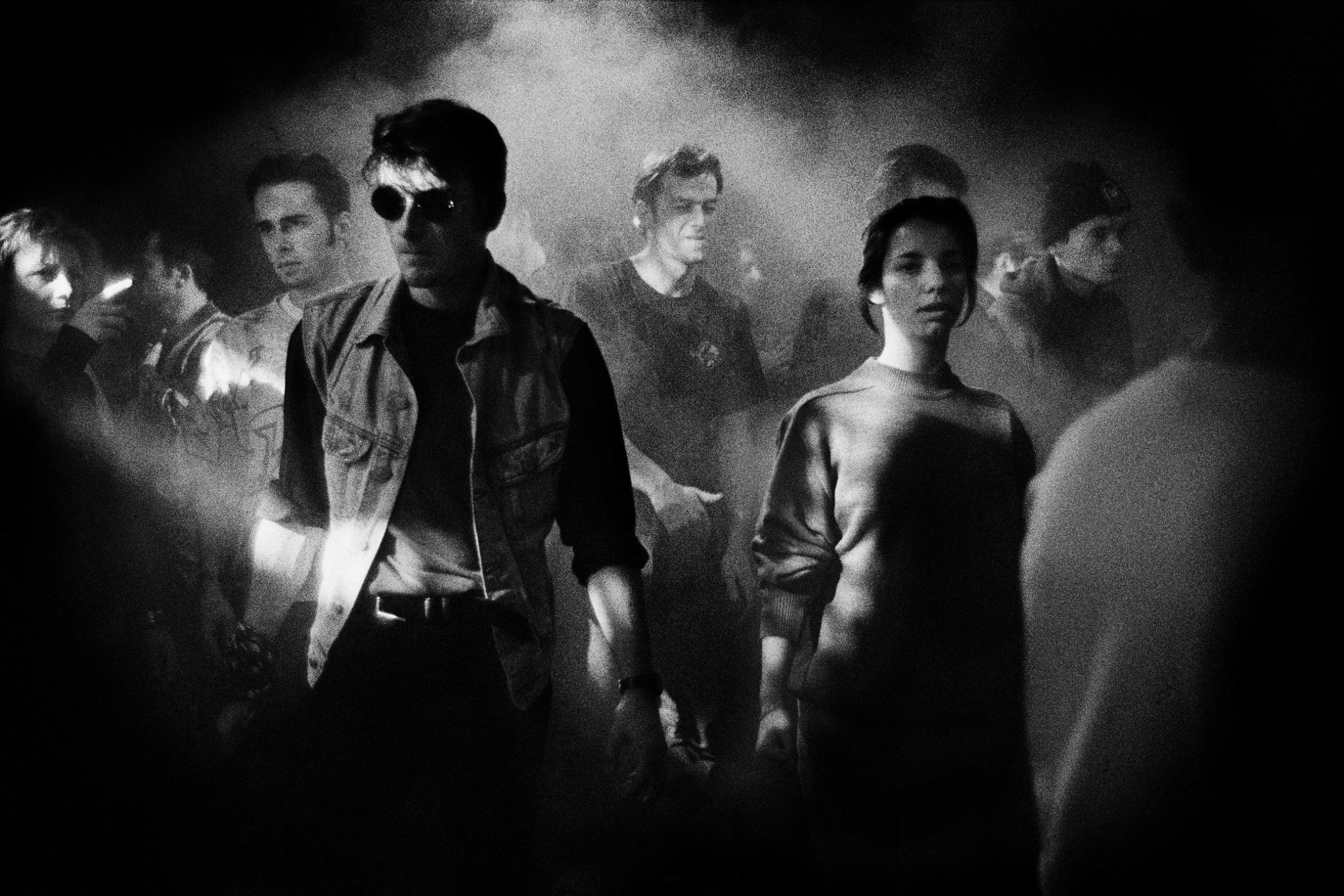 Features
Features
Design Museum's electronic exhibition is a heart-racing trip through history
The exhibition is interactive and set to a pulsating soundtrack
Many of us that love and depend on the electronic music scene haven’t been able to get a full sensory club fix for months now with all venues on lockdown and life being in an altered state globally. So the prospect of visiting new exhibition Electronic: From Kraftwerk to The Chemical Brothers for the reopening of The Design Museum in West London has got me a bit excited. It’s an adaptation of Electronic - an exhibition by the Philharmonie de Paris' Musée de la Musique (Museum of Music) originally curated by Jean-Yves Leloup in France last year - with an increased spotlight on UK electronic and rave culture, which is painfully under threat currently.
Project curator Gemma Curtin said: “This exhibition, planned before any knowledge of COVID-19, celebrates the cultural impact of electronic dance music since the first experiments to create music from electricity, a music that became the soundtrack of people who resist and defy authority. It is painful, then, that a pandemic has forced the complete closure of London's rich and varied music scene and financial hardship faces the music community for the unforeseen future. With the need for music appreciated as never before, in these challenging times we are delighted to be able to host an exhibition exploring this genre. London will not stop dancing.” Will it get my body popping? Let’s see...
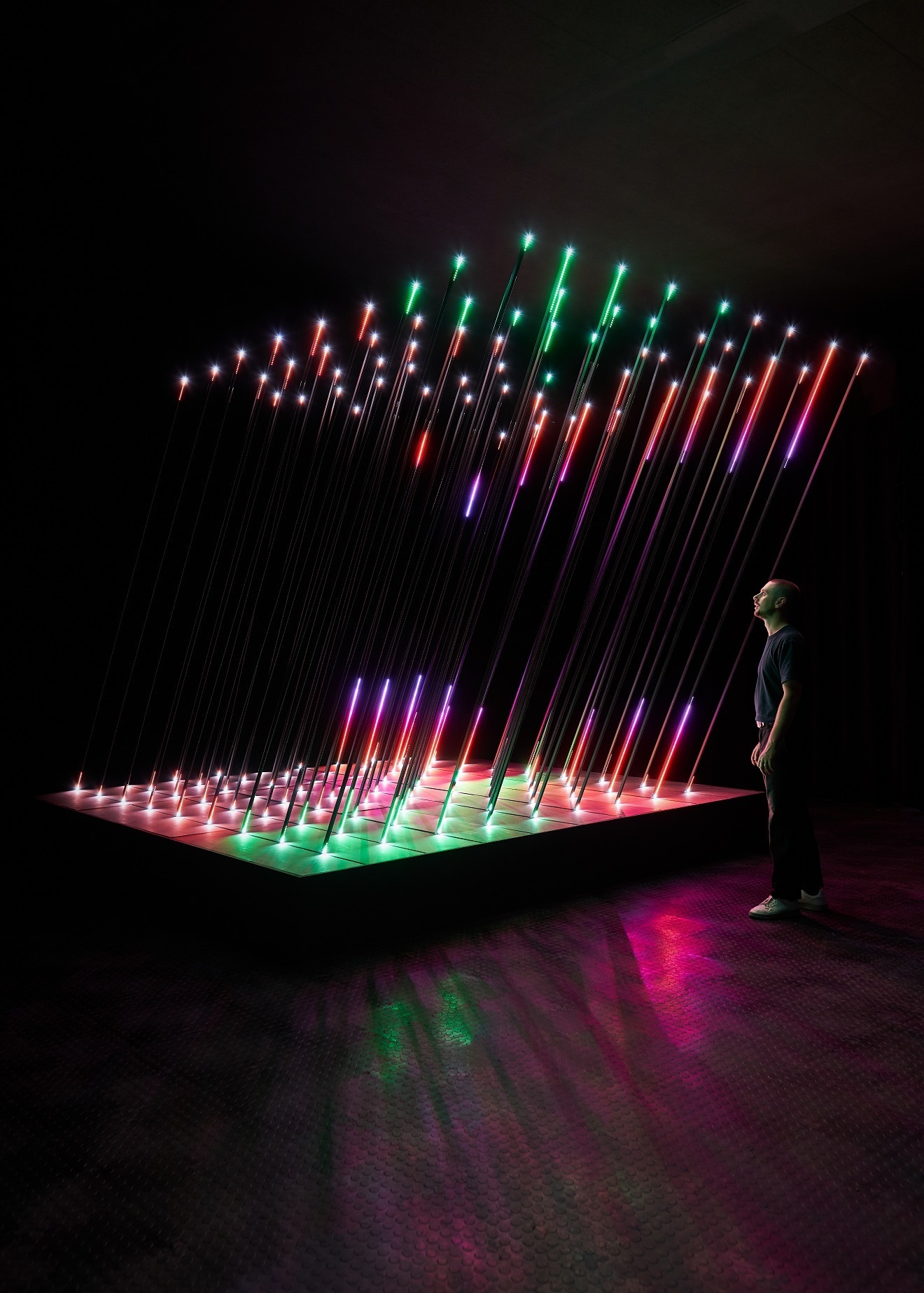

The pumping beat of a house and techno soundtrack, exclusively mixed by French DJ legend Laurent Garnier, is already seeping through the walls upon entry like you’re entering a banging rave. The intro board reads: “This exhibition focus is on the connections between electronic music and contemporary design, fashion and art.” Safety measures are in place, but you need to take your own headphones for the audio listening stations and wear a face mask at all times.
Here begins an extensive timeline starting from 1901 with 400 plus objects on display, covering more history than the From Kraftwerk to The Chemical Brothers title suggests. Among them is Nikolai Obukhov’s magnificent Brass La Croix senora, one of the earliest electronic instruments ever made, and Christian Clozier’s Gmebaphone 2 from 1975 that looks like the flight controls of a spaceship. Historians and music geeks alike will love stuff like the experimental classical composer Shiva Feshareki’s exploration into Daphne Oram’s work for the BBC Radiophonic Workshop

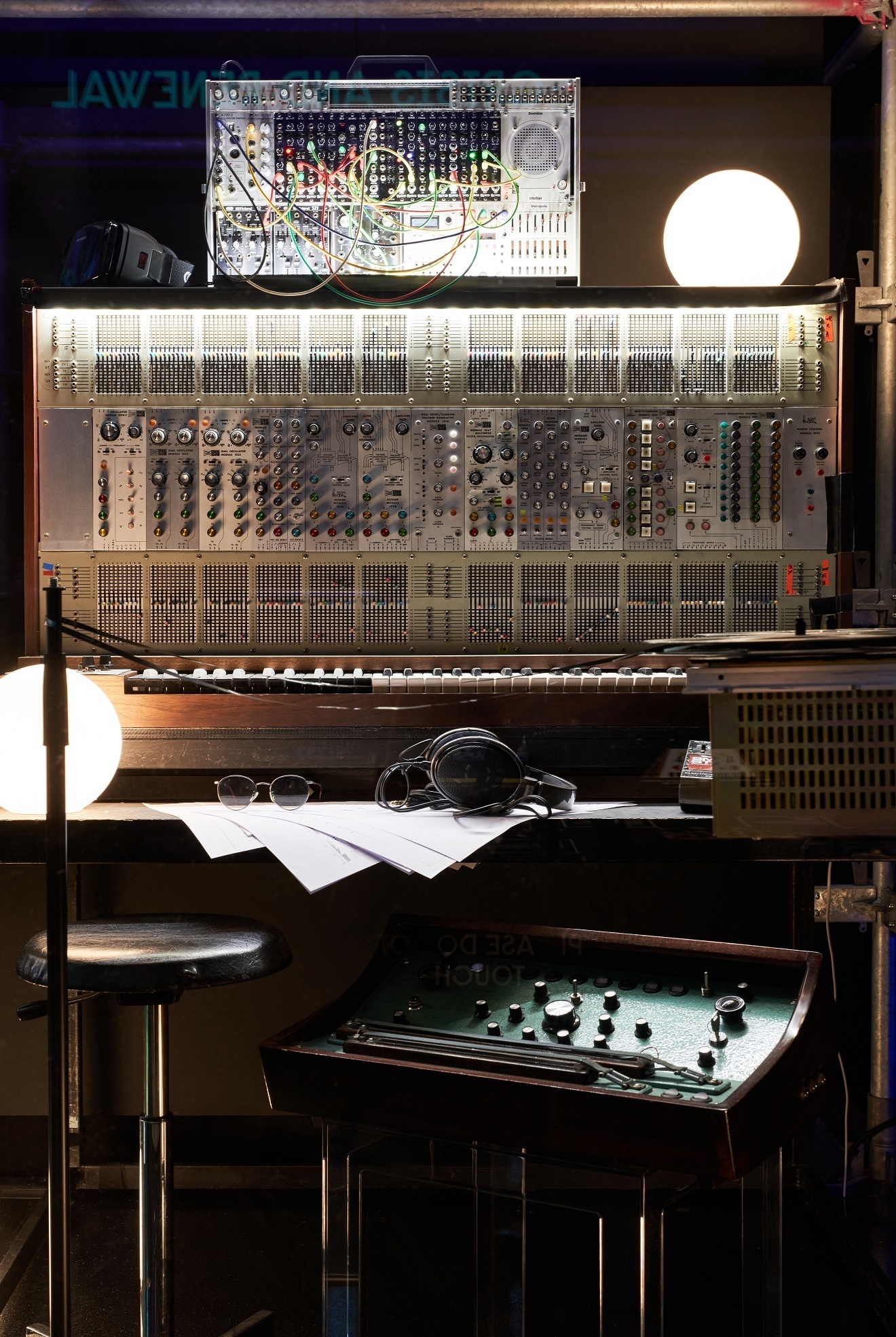
There’s vinyl collections of experimental electronic and psychedelic era music sleeve designs dated from the 1960s to 1970s, including from the François Bayle and Pierre Henry–curated Prospective 21e Siècle imprint. Giant Photographs of German techno parties lead you to a history section entitled ‘Man and Woman Machine’ introducing ‘The Mad Scientists of Sound’ with wall displays of information cards, photographs, various multimedia video monitors and headphone plug in points.
Some juicy bits of synthesiser hardware equipment feaure, like the modular Moog, Prophet and Korg from the 60s and 70s, Roland drum machines of the 80s, and Jeff Mills and Yuri Suzuki’s futuristic rhythm composer The Visitor. An imaginary and idealised Jean-Michel Jarre studio set up will get the studio bods drooling. But don’t get too excited! It’s look but don’t touch unfortunately.
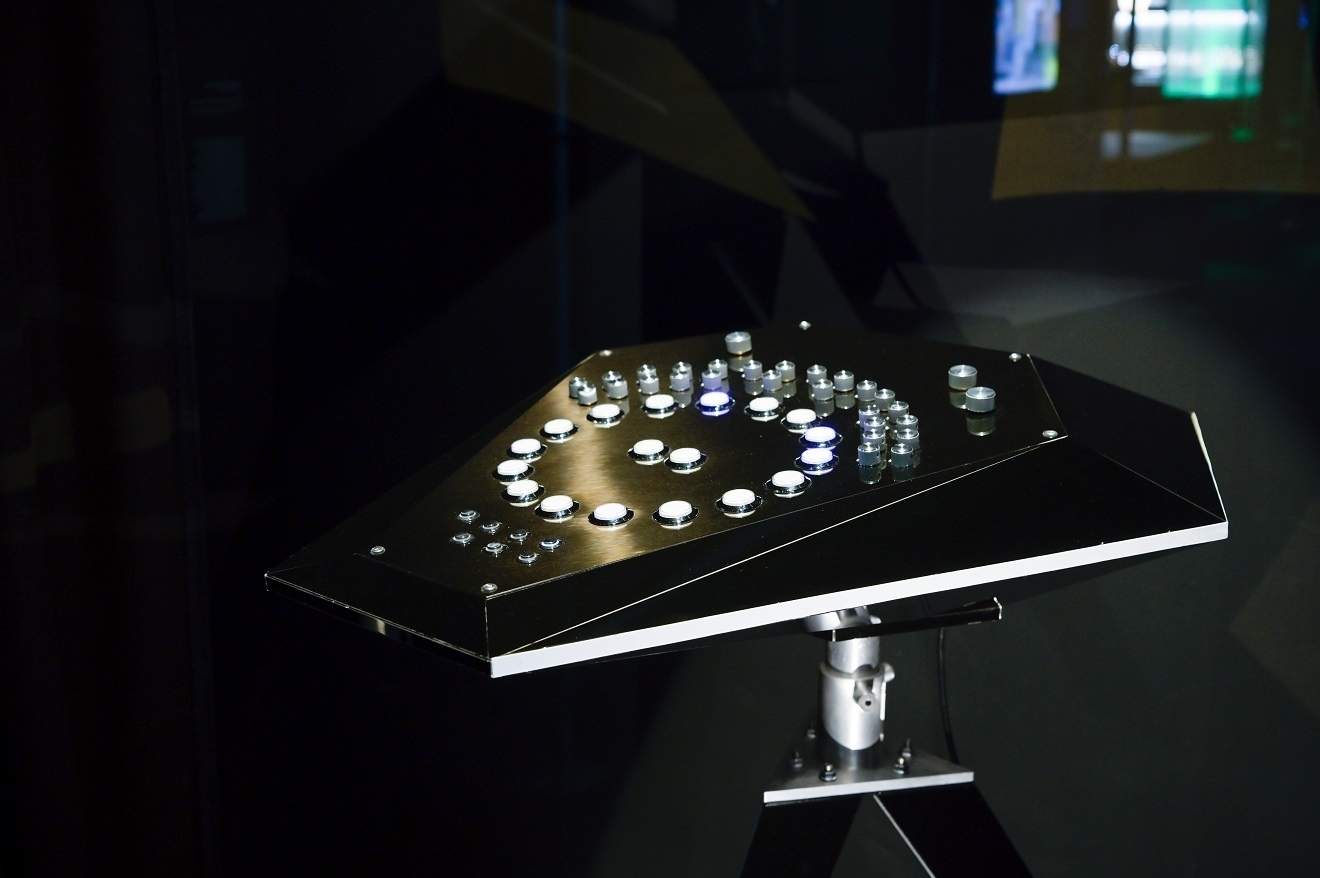

There's a lot to take in as you read through the post-punk, synth pop and disco years. Moments and figures include Donna Summer’s ‘I Feel Love’ in the 70s, electro pioneer Man Parrish, funk-hip hop outfit the Jonzun Crew, and Black American and Kraftwerk inspired electro funk in the 80s. Connections with technology such as Cubase and shifts in musical styles are cleverly tied together while the constant pulse of music atmospherically fills the low-lit gallery space.
Chicago, Detroit, Berlin, New York and the UK all have a place. There’s early rave event flyers, vinyl art, Tina Paul’s photographs of New York nightlife back in the Paradise Garage days with candid shots of Frankie Knuckles and Larry Levan. Electronic music inspired art on show ranges from works by New York’s Keith Haring to illustrations of London’s Lo Recordings packaging, alongside displays studying the relationship between technology, club graphics, formats, newer musical styles and sounds.
The show pays homage to the Motor City’s importance to techno with ‘Detroit Machine Soul City’. In this one person capacity area is a small gallery of quality photographs of techno legends like Juan Atkins, Kevin Saunderson, Kenny Larkin and Blake Baxter. A wall is dedicated to Mike Banks, the co-founder of pioneering collective Underground Resistance, showing a big selection of his label designs and a monitor of new school street dancers. I did feel this area could have been more extensive with more Black innovators and seminal figures from Detroit represented.

We get a historical view via magazine covers marking pivotal moments of rave revolutions, Summers of Love culture, community, and insight into masks and identity and the long-standing relationship with the LGBTQ scene, looking at how clubbing communities have fought laws intended to halt rave culture and expressions of resistance that have empowered minority groups.
Creative examples of connections between sound, visuals and costumes are found in the ‘Live video – The Concert reinvented’ section, including eye-boggling visuals created by Weirdcore for Aphex Twin’s ‘Collapse’ and spectacular developments in concert staging from Daft Punk and Chemical Brothers. This leads nicely into a dazzling 30-minute 3D experience celebrating 50 years of Kraftwerk. 3D glasses (supplied) on and mind blown!
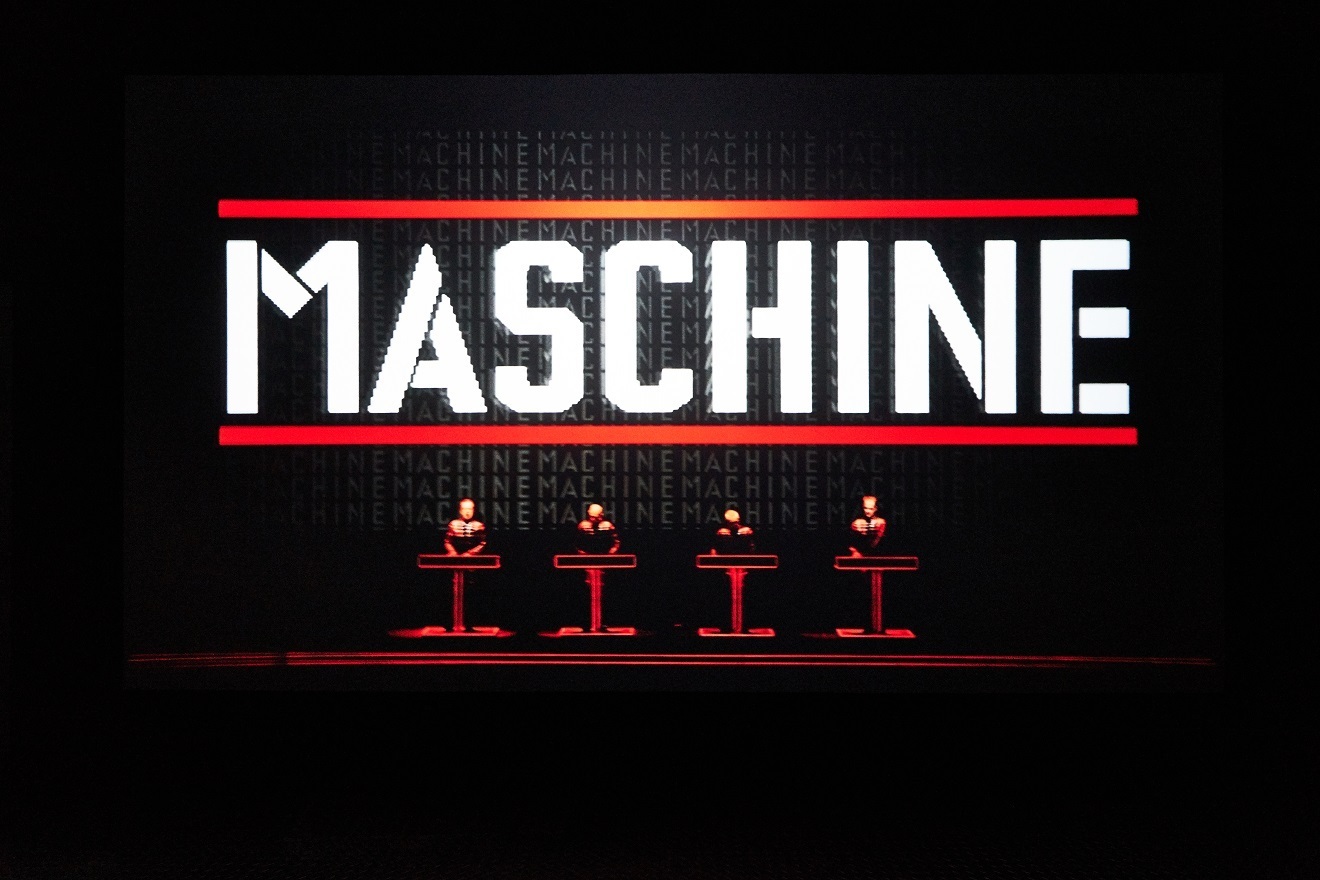
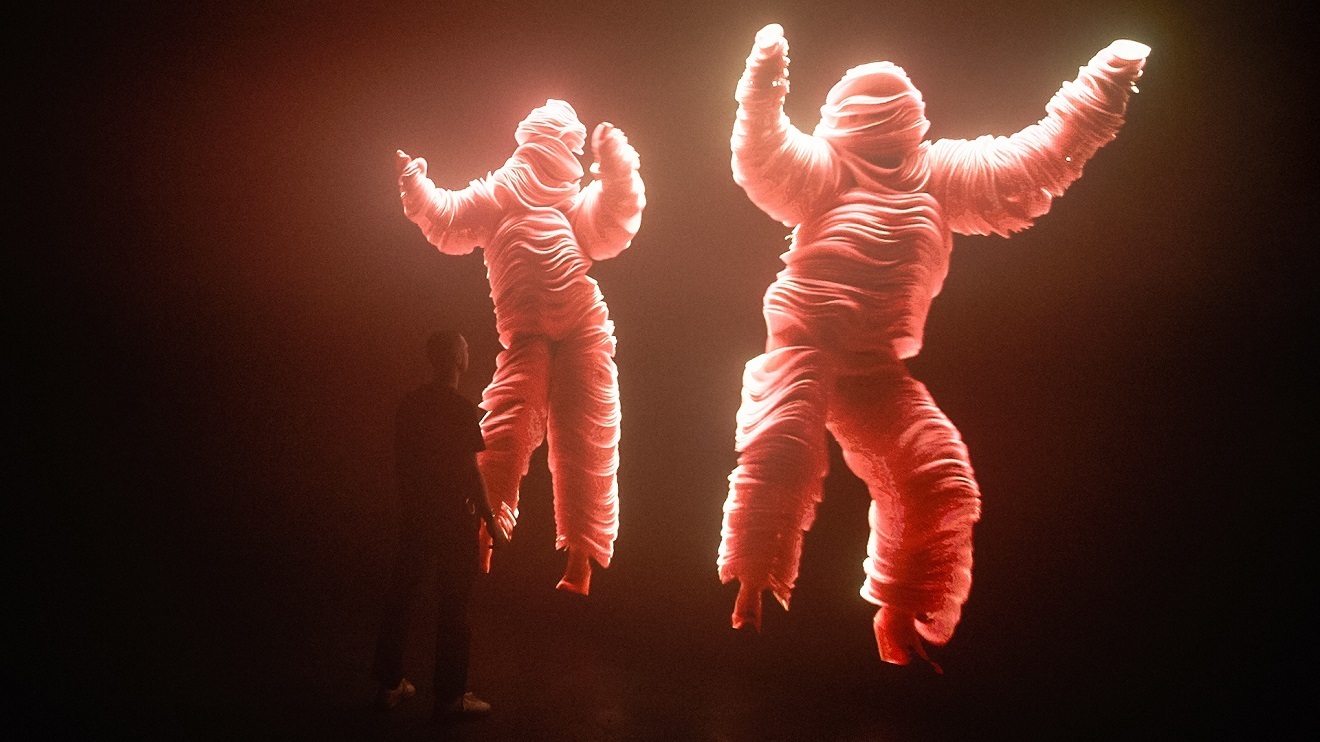
The focus then turns to the dancefloor and importance of DJs. There’s photos and footage of Jeff Mills on three decks, Richie Hawtin showing how he uses technology, and hip hop scratch DJs all ready for you to plug your headphones into. No physical object representing the turntable on show felt like an oversight. But there are plenty more graphics, projections, poster designs, architectural images of The Haçienda and innovative sleeve designs of independent record labels including UK born Moving Shadow, Suburban Base and Metalheadz. A brilliant sculpture called Zoetropic made of vinyl records and video is also a highlight.
The grand finale will blow your socks off as you enter the final dark room to experience the mighty Chemical Brothers AV performance of ‘Got To Keep On’. It brings to life the vibrant costumes designed by Kate Tabor and produced by show designers Smith & Lyall, with the Chemical Brothers noting: “Design is an essential element enhancing the experience of our live show. This new installation will give insight into how we work with Adam & Marcus (Smith & Lyall) on the visual aspect of our tours." It concludes an exhibition that brilliantly pieces together a huge jigsaw of electronic art, design and inspiring history. It’s a lot of fun and well executed – to quote another Chemical Brothers track: Go!
Normski is an artist, photographer, broadcaster and DJ, follow him on Twitter and Instagram
Electronic: From Kraftwerk to The Chemical Brothers is at the Design Museum until February 14, 2021, find out more here


